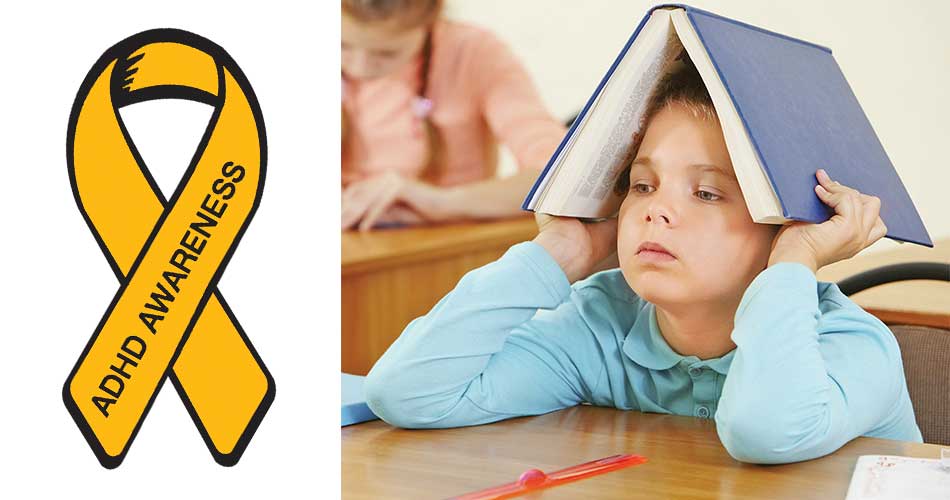Salt therapy – All you need to know
- 24 Feb - 01 Mar, 2024
Attention deficit hyperactivity disorder (ADHD) is a mental health disorder that can cause above-normal levels of hyperactive and impulsive behaviours. People with ADHD may also have trouble focusing their attention on a single task or sitting still for long periods of time.

Both adults and children can have ADHD. More than 60 per cent of children with ADHD still exhibit symptoms as adults. But for many people, ADHD symptoms decrease or become less frequent as they get older. It is a complex neurodevelopmental disorder that can affect a child’s success at school, as well as their relationships. The symptoms of ADHD vary and are sometimes difficult to recognise.
Here are 14 common signs of ADHD in children:
Self-focused behaviour
A common sign of ADHD is what looks like an inability to recognise other people’s needs and desires. This can lead to the next two signs:
• Interrupting
• Trouble waiting their turn
Interrupting
Self-focused behaviour may cause a child with ADHD to interrupt others while they are talking or intervene in conversations or games they are not a part of.
Trouble waiting their turn
Kids with ADHD may have trouble waiting their turn during classroom activities or when playing games with other children.
Emotional turmoil
A child with ADHD may have trouble keeping their emotions in check. They may have outbursts of anger at inappropriate times. Younger children may have temper tantrums.
Fidgeting
Children with ADHD often cannot sit still. They may try to get up and run around, fidget, or squirm in their chair when forced to sit.
Problems playing quietly
Fidgetiness can make it difficult for kids with ADHD to play quietly or engage calmly in leisure activities.
Unfinished tasks
A child with ADHD may show interest in lots of different things, but they may have problems finishing them. For example, they may start projects, chores, or homework, but move on to the next thing that catches their interest before finishing.
Lack of focus
He/she may have trouble paying attention — even when someone is speaking directly to them. They will say they heard you, but they will not be able to repeat what you just said.
Avoidance of tasks needing extended mental effort
This same lack of focus can cause a child to avoid activities that require a sustained mental effort, such as paying attention in class or doing homework.
Mistakes
Children with ADHD may have trouble following instructions that require planning or executing a plan. This can then lead to careless mistakes — but it doesn’t indicate laziness or a lack of intelligence.
Daydreaming
Children with ADHD aren’t always rambunctious and loud. Another sign of ADHD is being quieter and less involved than other kids. A child with ADHD may stare into space, daydream, and ignore what’s going on around them.
Trouble getting organised
The child may have trouble keeping track of tasks and activities. This can cause problems at school, as they can find it hard to prioritise homework, school projects, and other assignments.
Forgetfulness
They may be forgetful in daily activities. They may forget to do chores or their homework. They may also lose things often, such as toys.
Symptoms in multiple settings
A child with ADHD will show symptoms of the condition in more than one setting. For instance, they may show lack of focus both in school and at home.
Symptoms as children get older
As children get older, they’ll oftentimes not have as much self-control as other children their own age. This can make kids and adolescents with ADHD seem immature compared to their peers.
Some daily tasks that adolescents with ADHD may have trouble with include:
• Focusing on schoolwork and assignments
• Reading social cues
• Compromising with peers
• Maintaining personal hygiene
• Helping out with chores at home
• Time management
• Driving safely
Looking forward
All children are going to exhibit some of these behaviours at some point. Daydreaming, fidgeting, and persistent interruptions are all common behaviours in children.
You should start thinking about the next steps if your child regularly displays signs of ADHD or this behaviour is affecting their success in school and leading to negative interactions with peers. ADHD is treatable through behavioural therapies, medication or both. If your child is diagnosed with ADHD, review all of the treatment options. Then, set up a time to meet with a doctor or psychologist to determine the best course of action.
COMMENTS